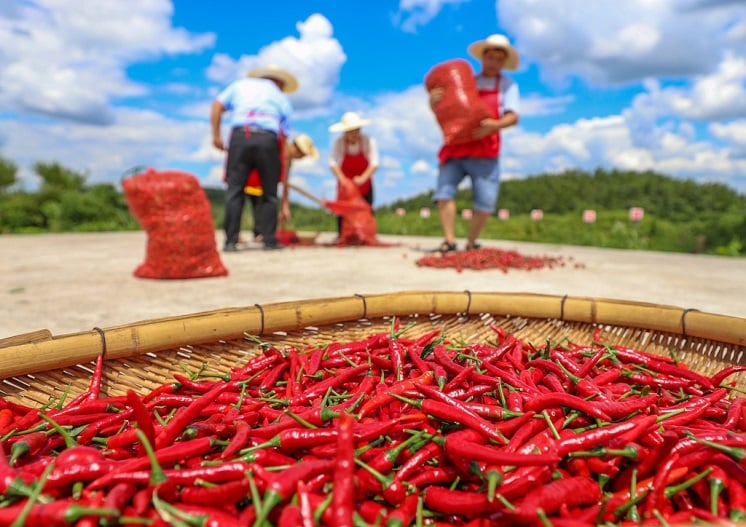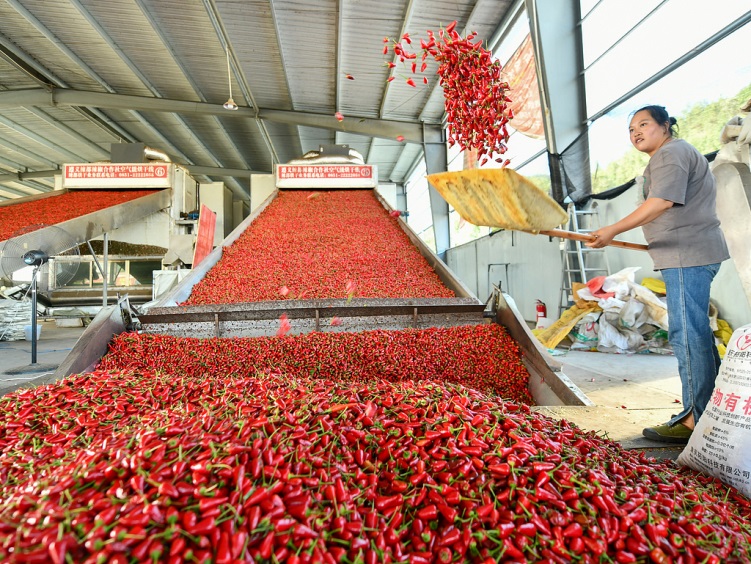Chilli sauce from China is setting mouths ablaze and taste buds dancing across the globe. From home kitchens to high-end restaurants, this fiery condiment has become a beloved staple for spice enthusiasts.
In the United States, it captured national attention in 2015 after a hot sauce showdown in Los Angeles, where the late legendary food critic Jonathan Gold named it a standout among global contenders. Across the Atlantic, it earned a coveted spot on The Guardian’s Christmas wish list in the U.K. What exactly gives this sauce its irresistible pull?
A flavour explosion in the mouths of food lovers
Known as Lao Gan Ma, which translates as “Old Grandmother,” this fiery condiment is affectionately dubbed the “Angry Lady Sauce”, thanks to the stern-faced woman on its label.
At first glance, the humble glass jar barely catches anyone’s eye until you unscrew the lid. Dark red chillies are soaked in richly flavoured oil and surrounded with bits of fermented soybeans. It might look intimidating at first with all the red chillies, but the sauce speaks with more flavour than spiciness alone. It’s not just the fiery burn but the addictive thrill that keeps chilli lovers coming back for more.
Foodies mix it with noodles or slather it on steamed buns while adventurous eaters swap it for tomato sauce on pizza, drizzle it over popcorn for a spicy kick, or even pair it with ice cream to blend heat and sweetness in surprising harmony. And somehow, it works.
The secret ingredient behind Lao Gan Ma’s heat

The secret of Lao Gan Ma chilli sauce lies in the high quality of its chillies, sourced from Guizhou Province in southwest China. This regional origin gives the sauce its distinctive aroma, leaving a rich, lingering flavour on the tongue. Locals say that many hot sauces rely on Guizhou peppers as the secret ingredient that makes the sauce bold enough to stand out, smooth enough to blend in.
While Sichuan may be China’s most famous spicy region, Guizhou was in fact the first to embrace chilli peppers back in the late 16th century, via the Ancient Silk Road. Then, with its mild temperatures, abundant sunlight, ample humidity, and the rugged landscape that prevents plant diseases and pests, Guizhou became a natural haven for chilli cultivation.
By the end of 2024, Guizhou had emerged as China’s leading pepper-producing province, contributing to the country’s position as the source of nearly half of the world’s chilli pepper output. Chilli peppers from Guizhou are now exported to more than 80 countries and regions, including the United States, the United Kingdom, Malaysia, Thailand, Myanmar, Indonesia, and Mexico, to name just a few.
Centuries of tradition shape today’s flavour
With over 400 years of chilli-eating tradition, generations in Guizhou have mastered the art of selecting pepper seeds that deliver the finest flavour and highest yields. Today, this tradition has developed into a scientific process, led by professional breeding teams.
According to Tian Hao, a local agricultural scientist, developing a new pepper variety can take several years, sometimes over a decade. The goal is to produce peppers that are resilient to floods and disease, but with a healthy appearance and exceptional flavour.
One such success is a variety called Zunjiao 111, selected among more than 4,000 hybrid candidates, and gained widespread acclaim at the 2023 Guizhou Zunyi International Chilli Expo.
Guizhou: China’s chilli benchmark
With its vast cultivation area and consistently high-quality peppers, Guizhou has become the benchmark of China’s chilli industry, setting the standard and influencing prices nationwide.
To gauge how hot the local chilli market is, both literally and economically, look no further than China Chilli City, a large-scale trading hub in Zunyi, southwest Guizhou. This mega-market has emerged as the beating heart of the nation’s chilli trade.
The China Chilli City was not built overnight. Over the past six decades, the pepper economy in Guizhou has transformed from scattered, informal village-level trading into a highly organized and efficiently operated market system.
It connects buyers and sellers from across China, and increasingly from abroad, with its online platform facilitating chilli imports from countries such as India and Myanmar. During peak season, the market is blanketed in a sea of vibrant red chillies, piled so high and wide that the edges vanish from sight. The air is thick with a pungent smell, so fiery it can make even seasoned traders sneeze.
From Guizhou to the globe
In 2024, the China Chilli City recorded a transaction volume of 750,000 tons of peppers, with a trade value surpassing $1.4 billion. In 2023, chilli peppers were exported to over 30 countries and regions from the trading hub, including the U.S., India, Mexico, and several Southeast Asian nations, reaching a trade value of $93.2 million.
Guizhou’s chilli peppers have been fueling a booming industry, blending centuries-old tradition with modern trade. This fiery crop powers a billion-dollar market, sustaining communities and shaping the future of global spice commerce, proving that great flavours can ignite more than just taste buds.
Source: Chen Ziq, CGTN
Related News:
China Broadens Its Visa-Free Travel Policy to Spur Economic Growth















